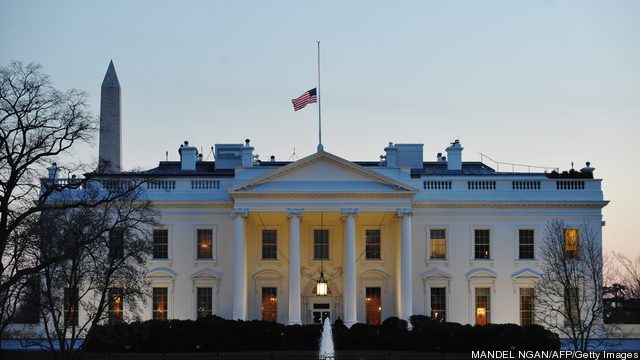The White House has released federal agencies’ sustainability and climate plans outlining methods to incorporate energy and climate considerations into their decision-making.
On October 31, 2014 – the fifth anniversary of the 2009 Executive Order on Environmental, Energy and Economic Performance – the White House released federal agencies’ sustainability and climate change adaptation plans, detailing achievements to date and outlining methods to integrate energy efficiency and climate considerations into their programs, policies, and operations. The White House launched the GreenGov Challenge, an online tool for nationwide federal employees to advance ideas and methods to meet the administration’s sustainability goals. It also announced the 2014 GreenGov Presidential Award recipients, honoring federal agency teams and individuals for innovative energy efficiency and waste reduction approaches.
The climate adaptation plans outline measures to incorporate climate issues into their decision-making – building on the initial February 2013 plans – and respond to a November 2013 executive order that established requirements to update and report progress on agency adaptation plans. The plans – released by 38 agencies – detail potential climate impacts on their missions and operations. Among the findings and statistics:
- The National Park Service reports that the Glacier National Park has lost more than 83 percent of glaciers since 1850 and is predicted to lose the remainder as soon as 2030.
- The Department of Agriculture estimates up to 100 percent increase in annual wildfire-damaged acreage by 2050; fire suppression funding has increased from 16 to 42 percent of the U.S. Forest Service’s budget since 1995.
- The Department of Health and Human Services considers climate impact as a top public health challenge; climate-related extreme events would disrupt continuity of care and access to essential health and human services.
- The Postal Service notes that weather and climate patterns could disrupt its service ability and increase infrastructure maintenance costs, jeopardizing the safety of approximately 500,000 employees engaged in critical tasks
- NASA reports that 66 percent of its assets are within 16 feet of mean sea level along U.S. coasts and that the U.S. space access is under threat from beach erosion and heat wave-related outages that could impede utilities’ power supply to NASA facilities
The sustainability plans outline actions to continue emissions reduction progress in the federal government – the nation’s largest energy user – and methods to meet water, energy, and waste targets. The federal government is on track to meet its goal of reducing emissions 28 percent by 2020, having already achieved 17 percent emissions reductions since 2008. The fed currently gets more than 9 percent of its energy from renewable sources and is on track to meet the 2013 Climate Action Plan goal of 20 percent electricity from renewable sources by 2020. Among the measures outlined in the agencies’ FY 2015 sustainability plans:
- – The Environmental Protection Agency will reduce its laboratories’ heating and cooling loads and convert from constant to variable air flow systems to address ventilation demand.
- – The General Services Administration will adopt innovative conservation measures such as reducing nighttime base loads on buildings and validating established building temperature settings.
- – The Federal Bureau of Investigation will require new buildings’ sustainable design specifications to exceed existing standards by 30 percent where cost-effective.
- – The Department of Veterans Affairs will facilitate better emissions management through updated utility data collection systems to provide building emissions estimates.
Originally published by EnerKnol.
EnerKnol provides U.S. energy policy research and data services to support investment decisions across all sectors of the energy industry. Headquartered in New York City, EnerKnol is proud to be a NYC ACRE company.


